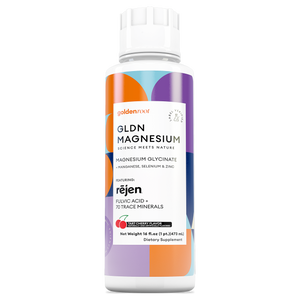Liquid magnesium supplements (especially those containing ionic magnesium chloride) are often preferred for their potential to be absorbed more efficiently than capsules. Because they’re already in a dissolved form so the body may not need to break them down as much before use.
Introduction: Why the Form You Choose Matters?
That’s because different forms of magnesium can vary in how well they’re absorbed, how the body uses them, and how they might affect digestion or tolerance.
But there's a new question in the mix: Should you take it in liquid or capsule form?
With supplement aisles more crowded than ever, understanding the differences between magnesium delivery formats can help you make an informed choice.
This guide breaks down everything from absorption and convenience to cost and user experiences to help you decide what suits your body and lifestyle best.
Why Magnesium Formulation Matters
Magnesium contributes to hundreds of biochemical processes: 1. supporting nerve signaling, 2. muscle recovery, 3. cardiovascular health, 4. energy production, and 5. restful sleep.
But the formulation you choose affects how efficiently your body can use it.
In supplement science, this is known as bioavailability [how much of the magnesium gets absorbed and put to use].
While the type of magnesium compound (like glycinate, citrate, or oxide) plays a role, so does how it's delivered: liquid versus capsule.
Read more: Magnesium for GLP-1 Therapy (Boost Recovery, Sleep Quality & Metabolism)
Liquid Magnesium: [ Fast-Acting, Flexible, and Gentle ]
Liquid magnesium is typically a magnesium glycinate or citrate dissolved in water or glycerin base.
It’s favored for its flexibility, especially for people who have trouble swallowing pills or want to adjust their dosage with ease.
Pros:
-
Quick absorption: Because it's already dissolved, your body doesn’t need to break anything down. This can lead to faster effects.
-
Customizable dosing: Use a dropper or teaspoon to adjust based on how your body feels that day.
-
Stomach-friendly: Liquid magnesium glycinate tends to be easy on digestion and less likely to cause cramping or loose stools.
-
Ideal for kids, older adults, or anyone with swallowing challenges.
Cons:
-
Taste can be a deal-breaker. Some find it metallic or chalky.
-
Some need refrigeration once opened. Not always ideal for those who are on the move.
-
Less portable. It’s not something you throw into a gym bag without planning ahead.
Read more: how to measure 5g of creatine
Capsule Magnesium: [ Portable and Popular]
Magnesium in capsule form is the go-to for most supplement users. It’s widely available and easy to incorporate into a daily routine.
Pros:
-
Convenient and consistent: Every capsule contains a precise dose, and no measuring is required.
-
Long shelf life: No refrigeration needed. Great for travel or on-the-go routines.
-
No taste issues: Ideal for those sensitive to textures or flavors.
-
Available just about everywhere.
Cons:
-
Slower absorption: Capsules need to dissolve in your stomach before magnesium becomes available.
-
Some can be large or hard to swallow.
-
Digestive upset is possible, especially with certain forms like magnesium oxide.
Read more: how long does it take for magnesium to work
What Science Says About Absorption + Timing
Research indicates that liquid magnesium may hit the bloodstream faster, often within 30-60 minutes, especially before bed or after a workout.
Capsules take a bit longer to break down, with peak absorption closer to 2-3 hours.
However, the total amount absorbed over 24 hours is often similar, especially when taken consistently.
Timing Tips Based on Goals and Lifestyle:
-
Sleep support? Take liquid magnesium 30 minutes before bed.
-
Busy morning? Capsules with breakfast may offer more convenience.
-
Sensitive stomach? Liquid magnesium glycinate is usually gentler than oxide capsules.
When to Choose Liquid vs. Capsule (Based on Use Case)
For Sleep or Anxiety Relief
-
Liquid magnesium glycinate offers a faster calming effect (great if you struggle with sleep latency).
-
Capsules work well if taken earlier in the evening (1 to 2 hours before bed).
For Post-Workout Recovery
-
Liquid magnesium is perfect post-gym (for muscle cramps or tension relief).
-
Capsules are better for those who want a no-fuss supplement they can toss in a gym bag.
For Digestive Sensitivities
- Liquid forms are ideal if you’re prone to constipation or have a sluggish gut.
-
Capsules may be too harsh for some if they include magnesium oxide or high doses of citrate.
For Convenience and Daily Maintenance
-
Capsules win when you’re traveling, commuting, or juggling a tight schedule.
- Liquid magnesium fits seamlessly into morning wellness routines (especially on the West Coast where smoothies and tinctures are already a norm).
Cost and Accessibility: Breaking Down the Real-World Factors
Price per Serving
-
Liquid magnesium is often more expensive due to additional processing and packaging.
-
Capsules are generally more budget-friendly, especially when bought in bulk.
Where to Buy
-
Liquid options like GLDN Magnesium are typically sold online or at boutique wellness retailers.
-
Capsules are everywhere [from your local CVS to Amazon, Whole Foods, or Walmart].
Insurance Consideration
Neither form is covered by health insurance. Look for subscription deals, bundle savings, or loyalty programs offered by U.S. supplement brands.
How to Choose What’s Best for You
Start with Your Health Goal:
-
Want better sleep or stress relief? Try liquid magnesium glycinate.
-
Need daily maintenance? Capsules offer reliable convenience at a lower cost.
- Focusing on athletic performance? Both forms can work (liquid post-workout / capsules before).
Digestive Tolerance Matters:
-
If you’re constipated, liquid magnesium is generally gentler.
-
If you’re prone to loose stools, choose capsule formulations with magnesium glycinate over citrate or oxide.
Think About Your Lifestyle:
-
Always on the go? Capsules are better suited for busy urban lives.
-
Rooted in home-based wellness routines? Liquid magnesium can easily be stirred into your favorite drink.
Read more: What Effect Do GLP-1 Drugs Have on Bone Health and Muscle?
How to Take It: (Dosage and Best Practices)
Standard Dose Range
-
Most adults benefit from 200-400 mg of elemental magnesium per day.
-
Liquid: often 1-2 teaspoons delivers 100-200 mg.
-
Capsules: check the label, usually 100-150 mg per pill.
No Need to “Load” Magnesium
-
There’s no need for a loading phase.
A consistent daily dose builds up magnesium stores within 1-2 weeks.
Timing Tips:
-
Liquid magnesium: 30 minutes before sleep or directly after training.
-
Capsules: split your dose: [one with breakfast, one with dinner].
Smart Pairing:
-
Magnesium works synergistically with vitamin D + calcium.
-
Avoid taking it with high-dose zinc or iron (they can block absorption).
What Real Users Say
“Liquid magnesium completely changed my sleep. I mix it into water at night, and I’m out within 20 minutes.” West Coast user, 34
“GLDN Magnesium has become part of my nightly routine. I just take a spoonful before bed and I’m already winding down; no pills and no hassle.”
New York-based marketing exec, 41
References & Sources
- https://www.mdpi.com/2072-6643/14/24/5235
- https://www.mdpi.com/2072-6643/12/7/2052
- https://www.health.com/types-of-magnesium-7853312



